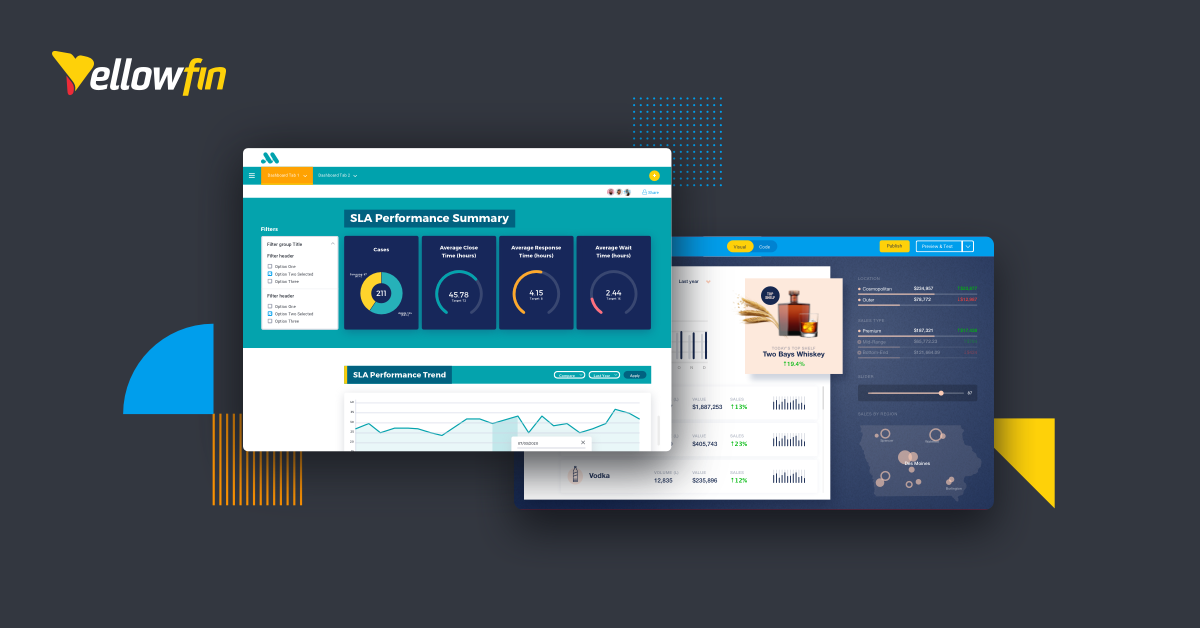
How to Price Analytics Applications
The best and most desired outcome for your unique analytical application is that it delivers commercial returns, makes it is easy for your sales team to sell, and even easier for your customers to buy. To achieve these outcomes, you have to get the pricing right.
There are many ways that you can price an analytics application, but the most important analytics pricing consideration is always finding the approach that makes the most sense for your unique use cases and business requirements. You want to price your product in a way that is easy for customers to see the value and for your salespeople to sell.
This blog is your guide on how to price and sell your unique analytical application offering.
Analytical applications: What are they?
Before we dive into pricing considerations, let's re-examine what analytical apps are.
Analytical applications are pre-packaged business intelligence (BI) features, such as self-service dashboards, reporting and data visualizations, embedded within existing business software. These BI capabilities aim to provide end-users with access to their data, so they can measure performance, analyze insights and make better informed decisions based on hard metrics, all within the transactional systems they use for their daily work.
Today, most businesses opt to find specialized embedded analytics solutions to integrate analytical capabilities into their application, and add value to their existing product. One such embedded analytics solution is Yellowfin BI.
Learn More: What is an Analytical Application?
Which Pricing Option for Your Analytical App?
When integrating analytics into your software, you want as many customers as possible to see your investment and regard it as a killer feature to have. But every product is different, as are the use cases and business requirements depending on the sector. This is why pricing is such a key element to plan for and ensure your software launch is successful, and it's fundamental you spend some time on getting this step right.
In the path to price your analytical app, there are generally six pricing options available:
- Modular pricing - This is when you charge an extra amount for the analytics functions within your application (value add-on).
- Base pricing - This option sees the analytics app bundled into your core product and the base fee is just increased to compensate.
- Free - This is when you bundle the analytics application into your core product, but just absorb the cost rather than increase the base pricing.
- Functional split - This is when you charge multiple fees for each component of the analytics application (different pricing for dashboards vs automated analysis, for example).
- Data split - This option is when you charge customers only for the specific type of data they access, with higher charges for executive level data and lower or operational data.
- Content split - This is when you charge customers for the content they use, with higher charges for executive dashboards and lower for operational dashboards.
There are advantages and disadvantages to each of these pricing methods, but the end goal is the same - you want to achieve the best commercial outcome for your business.
How to Decide on Analytics App Pricing
The purpose of embedding and offering analytics within your application is clear - to show the value it adds to your customers. The challenge is whether you price your software's analytical capability too high or too low, or whether you position the value it offers correctly or deter your customer base from choosing to add it on their purchase.
When choosing a pricing option for your analytical application, consider the ongoing investment into building, maintaining and developing your embedded analytics solution, and take the time to map out your return on investment (ROI) for the organization, especially if you intend to absorb the cost as part of your overall application package.
For example, if the potential sales of your core software do not offset the investment in analytics capability, by giving it away your company may view analytics as a cost center and not a revenue line item; it's unlikely your CFO would also be willing to commit funding for future development.
Also take into consideration your application's existing pricing model. It's important to play to your strengths and what your customers already know and understand. If your preexisting pricing model is based on FTE, for example, introducing new pricing based on data or server cores will potentially be confusing for both customers and your sales team.
Ultimately, the most important thing to keep front-of-mind is to avoid confusing your customers. You want to prevent any potential points that limit your customer from seeing the best of what your analytical application has to offer, while maximizing its visibility and value by, say, illustrating how existing users can achieve even more value by integrating the analytics side of the software they already use for their every day work.
How to Introduce Analytics as a User Option
There are several different ways to introduce customers to the value of your newly embedded analytics. You can offer the analytics part of your application as a value add-on option for a fee, or provide limited functionality for free to act as a preview. Analytics could be offered to one or a limited group of users as part of a selling package, with analytics spreading across the organization as people start to see the value.
Keep your pricing simple and your sales team will be more confident selling the product and your customers will be happy.
If you’ve priced your analytics suite a little too high, or positioned it slightly wrong, this may deter your customers from choosing to add on the analytical application- making first impressions extremely important to nail down. Without seeing the analytics, they won’t see the value, so spend the necessary time to determine how your business can present analytics and appeal to your customer bases' unique needs.
Why Simplify Analytical App Pricing?
The most important thing to remember when pricing an analytics application is that it should be easy to buy. If your sales people are confused about how it’s priced, imagine what it’s like for your potential customers!
If something is easy to sell, it’s generally also easier for your customers to buy. The key to making something easy to sell is for the value proposition to be clear. It’s why Yellowfin believes it's generally important to separate your analytics app from your core product when determining how to price it. This requires you to look at the analytics application independently and give it a distinct value. This value should be something that you can articulate internally and also help your customers understand.
If you can articulate the value of the standalone analytics application internally, you can also justify why you’re spending money and time on this feature. By taking a modular approach, your business can clearly identify the revenue that is attached to the analytics and its ROI. This may make it easier when it comes to deciding how to allocate resources in the future.
Similarly, if your customers can understand what information they will get and how it will help them make better decisions, they will be able to articulate the ROI of your embedded analytics to their internal stakeholders and be more willing to purchase it.
For more on how to build and sell great embedded analytics applications from start to finish, we advise reading our free guide, The Ultimate Guide to Embedded Analytics.
You can also download our free guide to keep in PDF whitepaper format here.
Keep your pricing model consistent
Your existing pricing model is the best place to start. If your model is based on number of users, then this should form the basis of the new pricing model. Introducing a whole new model will only confuse your customers and sales team. Remember, you’re trying to add value to your existing customers, not create a new point of negotiation or make them wonder whether they should look at a competitor’s product.
This is where modular pricing has an advantage. It creates a separate price point for your analytics solution - i.e. your core product is worth X and the analytics solution is worth an additional Y. It’s then clear to customers what they will pay for the additional value.
Within modular pricing, you can also add different levels of pricing by splitting the product by function, data or content. This means a functional user, someone who creates content, might be charged a higher price than someone who just consumes dashboards and reports. Similarly, a data or content split would sell your data or content in different blocks - executive data that's worth a lot more to the C-Suite might be priced at a higher price point than operational data that is perceived to be of lower value.
While the most consistent pricing approach may be to just absorb the analytics into your core product, this isn’t necessarily the best commercial option. It may be easier to sell, and your customers will get more value from the core product, but it doesn’t recognize the value that the analytics give your customers. Essentially, you could be leaving money on the table by not valuing the analytics component on a separate basis.
In addition, absorbing analytics into the pricing of the broader product can cause internal problems. From a P&L perspective, analytics becomes just another cost centre without any clear value attached to it. This may make it difficult to sell internally down the track as you need to invest more time and resources.
Pricing Analytical Applications: A Summary
Regardless of which pricing model you choose to adopt, the ultimate goal is always to achieve the best outcome for your business and your customers.
The product should be easy for your sales reps to sell, and simple enough for customers to identify the value it provides them. Happy sales people, satisfied customers, and a growing bottom line are the ultimate goal of any pricing strategy.
How Yellowfin Prices Embedded BI
Yellowfin is priced so that it is simple, predictable and scalable. There are no surprises and no hidden add-ons with access to a suite of exclusive features to enhance the value of your software product. Discover more today.


